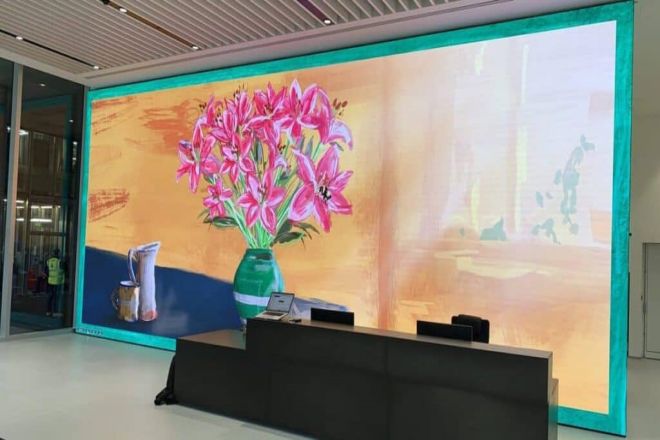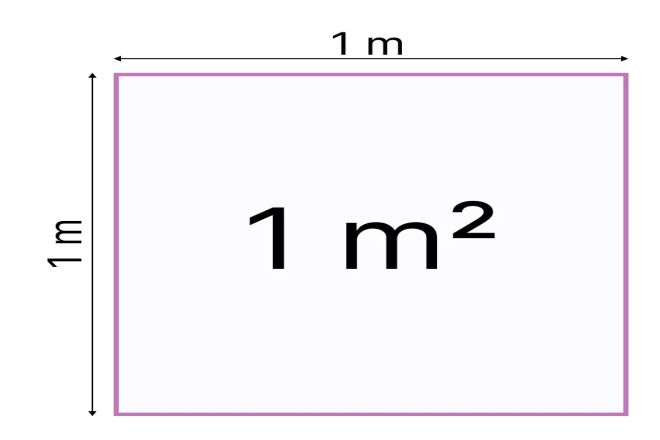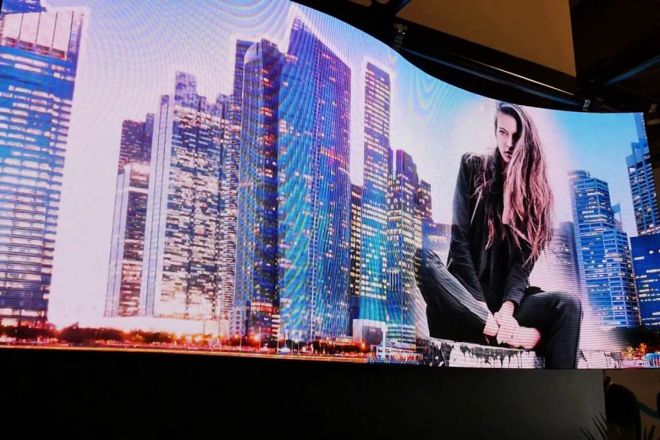介绍

随着科学技术的飞速发展, LED显示屏 已经成为现代社会不可缺少的一部分。
无论是商业广告、户外宣传、体育赛事还是舞台演出,LED显示屏都因其画质高清、亮度高、寿命长等优势而被广泛应用。然而,在选择LED显示屏时,尺寸往往是一个关键的决定因素。
1、LED显示屏英寸尺寸分析
英寸,作为长度单位,起源于英国,英文名称为“feet”,缩写为in。在公制中,1英寸等于2.54厘米。这一长度单位不仅在日常生活中被广泛使用,而且在科技、工业、建筑等许多领域也占有重要地位。
在LED显示屏领域,通常使用英寸来描述显示屏的对角线长度。例如“XX英尺”LED显示屏通常表示显示屏的对角线长度为XX英寸。这种描述方法简单直观,便于用户快速了解显示屏的尺寸。
1). 尺寸计算与选择
- 如何根据像素密度和分辨率计算尺寸
虽然像素密度(PPI)和分辨率与显示器的尺寸有关,但通常不直接用它们来计算显示器的尺寸。而是可以通过测量显示器对角线长度(以厘米为单位)然后除以 2.54 来获得显示器的尺寸。
另外需要注意的是,像素密度和分辨率主要影响显示屏的清晰度和细腻度,而不是其物理尺寸。因此,在选择LED显示屏时,需要根据实际需求和预算,综合考虑像素密度、分辨率、尺寸等因素。
2). 不同应用场景下选择英寸大小的原则
- 室内应用场景:
由于室内空间有限,通常会选择55寸、65寸等中等尺寸的LED显示屏,这些尺寸的显示屏既能满足近距离观看的需求,又不会占用太多的空间。
- 户外应用场景:
户外空间比较宽敞,需要吸引远处观众的注意力,因此户外LED显示屏的面积通常较大,比如几十平米甚至更大,这些大尺寸显示屏不仅分辨率更高、视角更广,而且在远处也能保持清晰的显示效果。
3).英寸大小对显示效果的影响
- 分辨率与像素密度的关系:
在相同尺寸下,像素密度越高(也就是PPI值越大),显示的清晰度越高。因此,在选择LED显示屏时,需要根据观看距离和实际需求选择合适的分辨率和像素密度。
- 视觉体验与尺寸的关系:
除了分辨率和像素密度,显示屏的尺寸也会影响观众的视觉体验。一般来说,大尺寸的显示屏可以提供更宽阔的视野和更震撼的视觉效果。但如果观看距离太近或空间有限,过大的尺寸可能会引起视觉疲劳或不适。
因此,在选择LED显示屏时,需要根据实际需求和观看环境,综合考虑尺寸因素。
2、LED显示屏平方米尺寸分析

平方米是面积单位,英文为“平方米”,缩写为m²。源于国际单位制,用于测量物体面积大小。具体来说,边长为1米的正方形的面积为1平方米。
在LED显示屏领域,通常使用平方米来描述显示屏的实际显示面积,即屏体长度与宽度的乘积,这种描述方式特别适合于户外大型显示屏或者需要精确计算显示面积的场合。
1). 平方米大小的计算与选择
- 如何根据显示面积和分辨率计算平方米大小
LED显示屏的平方米大小计算比较简单,只需要知道它的长、宽的具体数值(一般以毫米或者米为单位),将两者相乘得到面积,再将面积换算成平方米即可。分辨率在这里不直接参与平方米大小的计算,但会影响显示内容的清晰度和细腻度。
例:假设一块LED显示屏的长度为10米,宽度为5米,那么它的面积就是10m*5m=50平方米。
2). 不同应用场景的平方米尺寸选择原则
户外广告牌: 为了吸引远距离观众的注意力,通常需要选择较大的平方米尺寸,例如几十甚至几百平方米的显示屏。
体育场馆: 为了满足大量观众的观看需求,体育场馆内的LED显示屏也需要有更大的平方米尺寸,以保证每一位观众都能清晰地看到比赛画面。
展览和会议中心: 在这些场合,可以根据展览或会议的内容和规模,选择合适尺寸的LED显示屏来显示相关信息或视频。
3). 平方米大小对显示效果的影响
- 显示面积与观看距离的关系
显示面积的大小直接影响观众的观看感受。一般来说,观看距离越近,所需的显示面积越小;观看距离越远,所需的显示面积越大。因此,在选择LED显示屏的平方米尺寸时,需要充分考虑观众的观看距离和实际需求。
- 视觉冲击力与尺寸的关系
更大的平方米尺寸可以带来更强的视觉冲击力,更容易吸引观众并留下深刻印象。但过大的尺寸也可能造成观看疲劳或不适,因此在保证视觉冲击力的同时,还要注意控制显示屏的尺寸和观看距离。
3. 英寸与平方米的比较与换算
1). 英寸与平方米的对应关系
英尺与平方米是两种不同的量纲,分别用于描述LED显示屏的对角线长度和实际显示面积,虽然描述的是同一显示屏的不同属性,但两者之间存在一定的对应关系。
- 示例及案例分析:
假设我们有一个LED显示屏,对角线长度为100inch,为了估算其大约的平方米大小,我们可以将其对角线长度换算成厘米(1inch=2.54cm),然后根据勾股定理计算出显示屏的长和宽(假设为正方形),最后将长乘以宽即可得出面积。
但需要注意的是,由于显示器的长宽比不同,实际计算可能会有差异。
2). 如何将英寸转换为平方米
2.1). 换算公式及步骤:
- 英尺至平方米:
由于直接换算公式比较复杂(涉及到显示器长宽比等因素),所以通常需要借助专门的工具或软件来进行换算。不过,一个粗略的估算方法是:先将英寸换算成厘米,再估算显示器的长宽(根据一定的长宽比),最后将长宽相乘,得到平方米大小。
- 平方米 换算为 英寸:
同样,由于直接转换公式复杂,通常需要借助特殊的工具或软件。
不过,可以通过反向估算来进行转换:首先,根据平方米尺寸和假设的长宽比,计算显示器的长度和宽度(以厘米为单位),然后将长度和宽度转换为英寸(1 厘米 = 0.3937 英寸),最后计算对角线长度(使用勾股定理)。
2.2).转换过程中注意事项:
由于显示器的宽高比可能不同,转换过程中可能会出现错误。
在进行转换时,您需要确保所使用的工具或软件足够准确和可靠。
如果您对转换结果有精确的要求,建议咨询专业人士或使用专业的转换工具。
3).实际应用中的选择建议
在选择LED显示屏的尺寸描述方式时,要根据具体的应用场景和需求来决定。如果需要快速了解显示屏的尺寸大小(比如购买电视机时),可以选择以英寸作为描述方式;如果需要精确计算显示屏的显示面积或者进行专业设计,则应选择以平方米作为描述方式。
在英寸与平方米之间进行换算时,应注意选择合适的换算工具或方法,以保证换算结果的准确性和可靠性。如有可能,建议直接参考相关产品手册或咨询专业人士,以获得最准确的信息。
4.LED显示屏尺寸选择的其他考虑因素

1). 分辨率和像素密度
- 分辨率对显示效果的影响
分辨率是指LED显示屏水平方向和垂直方向的像素数量,高分辨率意味着在同样大小的显示屏上可以分布更多的像素,提供更细腻、更清晰的图像。在LED显示屏领域,分辨率越高,显示效果越好,可以呈现更多的细节和色彩层次。
- 像素密度与观看距离的关系
像素密度(PPI)是指单位面积内像素的数量,决定了显示器的清晰度,尤其是近距离观看时。一般来说,像素密度越高,显示器的清晰度越高。
观看距离与像素密度之间存在一定的关系,观看距离较近则需要较高的像素密度才能保证图像的清晰度,观看距离较远则可以适当降低像素密度要求。
2). 观看距离和观看角度
- 观看距离对显示效果的影响
观看距离是指观众眼睛到LED显示屏的距离,观看距离对显示效果有直接的影响,观看距离过近,容易使观众产生不适感或疲劳感,观看距离过远,又不能充分发挥显示屏的高分辨率和清晰度。
因此在选择LED显示屏尺寸的时候,需要根据实际的观看距离来确定合适的尺寸范围。
- 观看角度与观看体验的关系
视角是指观众可以看到显示屏全貌的最大角度。更大的视角可以保证更多的观众可以同时看到显示屏的内容,提高观看体验。在选择LED显示屏时,需要根据实际应用场景和观看人数来确定合适的视角范围。
3).安装环境及空间限制
- 安装环境对尺寸选择的限制
安装环境是选择LED显示屏尺寸需要考虑的重要因素之一,不同的安装环境对于显示屏的尺寸要求也不同。
例如在户外广告牌或者大型活动现场等场所,需要选择较大尺寸的显示屏,才能吸引观众的注意力,保证信息的清晰传达;在室内会议室或者商场展示区等场所,则需要根据空间大小以及观看距离选择尺寸适中的显示屏。
- 空间限制对尺寸选择的影响
空间限制也是选择LED显示屏尺寸需要考虑的因素之一,如果安装空间有限,则需要选择尺寸较小的显示屏才能满足空间要求。
同时还需要考虑显示屏的安装方式、支架结构等因素,保证显示屏的稳定性和安全性。
综上所述,LED显示屏尺寸的选择需要综合考虑多种因素,包括分辨率和像素密度、观看距离和观看角度以及安装环境和空间限制。
在实际应用中,需要根据具体的需求和条件选择合适的显示屏尺寸,以保证最佳的显示效果和观看体验。
结论
在科技飞速发展的今天,LED显示屏的尺寸选择也变得越来越重要,无论是以英寸还是平方米作为尺寸描述方式,都需要根据实际应用场景和需求进行综合考虑。
同时,我们还要注意,除了尺寸之外,分辨率、像素密度、观看距离、观看角度、安装环境等因素也会对LED显示屏的显示效果产生重要影响。所以,在选择LED显示屏的时候,我们要综合考虑各方面的因素,确保最终选择的显示屏能够满足我们的需求。
最后,如果您想了解更多关于LED显示屏的知识, 请与我们联系。
